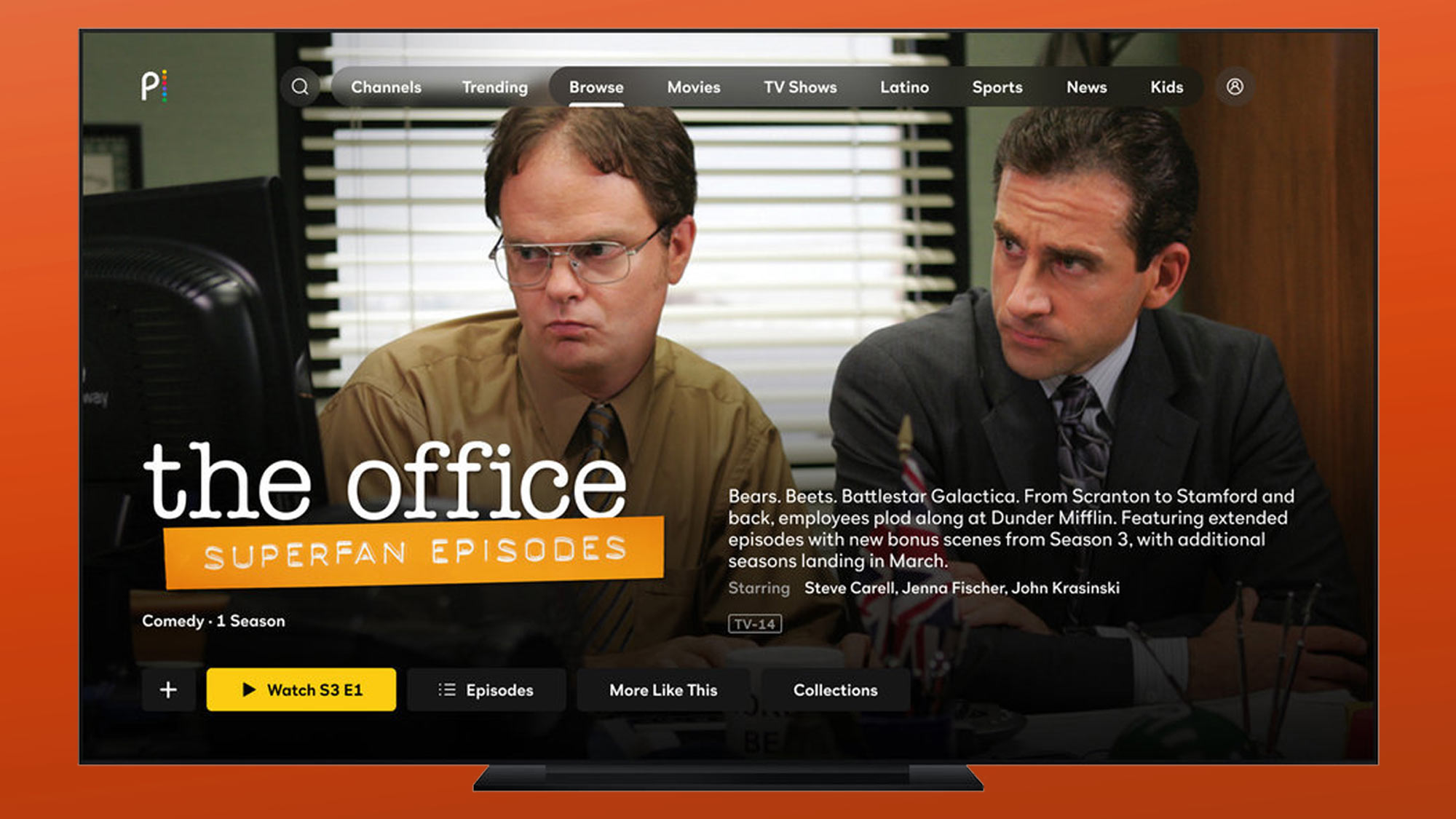In the ever-expanding world of laptops, the MacBook Air has long been regarded as a top choice for users seeking a balance of performance and portability. However, with 2021 bringing a wave of new contenders, it's time to explore the best MacBook Air alternatives available in the market today. From the sleek Dell XPS 13 Plus to the powerhouse Razer Book 13, this article will take you through a wide range of options that challenge the MacBook Air's supremacy. So whether you're a student, a professional, or a casual user, there's bound to be a laptop on this list that suits your needs and preferences. Get ready to discover the next best laptop for 2021 and beyond.
Dell XPS 13 Plus
A Revolutionary Alternative to the 13-Inch MacBook
Pros- Incredibly innovative design
- Impressive OLED screen
- Handy performance modes
- Exceptional haptic touchpad
- Webcam has undergone significant improvements
- Generates heat at the bottom
- No headphone jack
- Below-average battery life
Who should consider it: Anyone in need of a mid-sized laptop with substantial power and a robust build.
Why we made the choice of the Dell XPS 13 Plus:
Dell's XPS 13 Plus is built around 12th-generation Core i5 and i7 processors. On the other hand, the MacBook Pro 13 from Apple and the MacBook Air both feature Apple's in-house Ms processor. In terms of design, the XPS 13 Plus measures 0.6 inches in thickness and weighs approximately 2.71 pounds. The 13-inch MacBook Pro is slightly thicker and heavier at 0.61 inches and 3.1 pounds, while the MacBook Air M2 is 0.44 inches thick and weighs 2.7 pounds. However, these figures are merely numerical values, as apart from the MacBook Air's exceptional slimness, you won't notice any substantial differences when carrying them around.
Under the hood, the Dell XPS 13 Plus offers up to 32GB of system memory and up to 2TB of storage. The 13.3-inch MacBook Pro M2 and 13.5-inch MacBook Air M2 offer up to 24GB of system memory and up to 2TB of storage. Take note that a new XPS 13 is in the works, which will feature a complete redesign and an upgrade to Intel's 12th-gen CPUs. Similar to the MacBook, the XPS 13 Plus possesses a haptic touchpad that surpasses mechanical versions, with the entire surface being clickable and providing precise responses. The edge-to-edge keyboard rivals Apple's Magic Keyboard in terms of typing speed and comfort.
When it comes to connectivity, the Dell XPS 13 Plus shares similar features with two Thunderbolt 3 ports, although it lacks a 3.5mm audio jack. It comes with a USB-C to USB-A adapter and a USB-C to 3.5mm audio adapter, allowing you to connect an external keyboard, mouse, or wired headset. Some configurations even offer touch-based screens with a UHD resolution, and there is the option of an OLED panel that delivers some of the most vibrant colors and contrast available on a laptop today.
For those seeking an alternative to Apple's larger 16-inch MacBook Pro, the Dell XPS 15 is a suitable match. Starting at $1,149, it features 12th-generation Intel Core i5 and i7 processors, up to a GeForce RTX 3050 Ti discrete graphics chip, up to 64GB of system memory, and up to a 2TB PCIe-based solid-state drive. Apple's 16-inch MacBook Pro starts at $2,399.

 Mark Coppock/Digital Trends
Mark Coppock/Digital Trends
HP Pavilion Plus 14
The Finest Alternative to the 13-Inch MacBook Pro
In Conclusion:
HP continues to enhance its Pavilion consumer line with an affordable ultraportable featuring a stunning OLED screen and a high-resolution webcam.
POSITIVES
Outstanding 2.8K OLED display at a competitive price
Slim and lightweight (although not the lightest)
Impressive range of ports and a 5-megapixel webcam
NEGATIVES
Battery life falls short of 10 hours
Lack of webcam privacy shutter
No Thunderbolt 4 ports
GET IT NOW
9.99 HP
(Opens in a fresh window)
Lenovo ThinkPad X1 Nano
A Smaller and Lighter MacBook Air Alternative
Reasons to consider buying this: It's the tiniest and lightest alternative to a MacBook with an exceptional keyboard.Who should consider it: Anyone in search of a compact device to carry around without any compromises.
Why we made the choice of the Lenovo ThinkPad X1 Nano:
For a compact alternative that offers the same premium feel and performance as the MacBook, Lenovo’s ThinkPad X1 Nano is the way to go. It features a 13-inch display, making it comparable to the MacBook Air in terms of thinness. It is also incredibly lightweight, weighing in at just 1.99 pounds, as opposed to the MacBook Air's 2.8 pounds. Additionally, the 2160 x 1350 display supports Dolby Vision, resulting in stunning visuals for photos and videos.
In addition, it comes equipped with Tiger-Lake Intel Core i5/i7 processors and starts with 8GB of RAM and a 256GB SSD. While it may not be the most powerful workstation, it should deliver solid performance for everyday users and even prosumers.
The main selling point of the ThinkPad X1 Nano lies in its adoption of the same keyboard found in every other X1 product. Lenovo's X1 series has consistently led the way in this category, making it exciting to see it in a slim and lightweight design. The keyboard offers a deeper typing experience compared to Apple's Magic Keyboard and provides a different tactile feel preferred by some typists. Therefore, this computer is ideal for writers, journalists, or anyone who frequently sends a large number of emails. If typing is a crucial aspect of your overall experience, the X1 Nano is definitely worth considering. Keep in mind that a new model, the X1 Nano G2, is set to launch soon, potentially replacing the current model on the list.
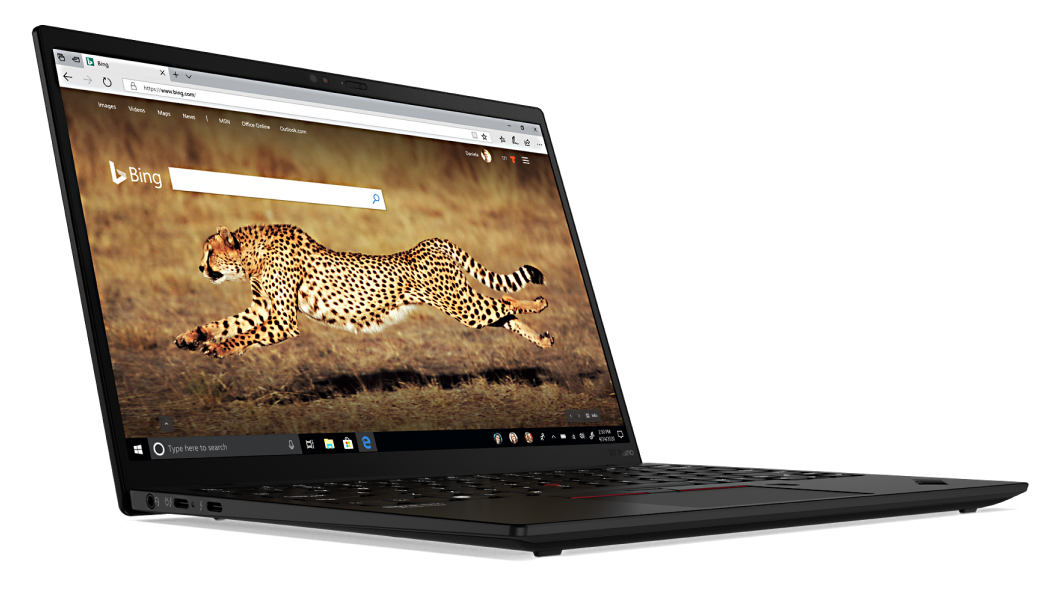
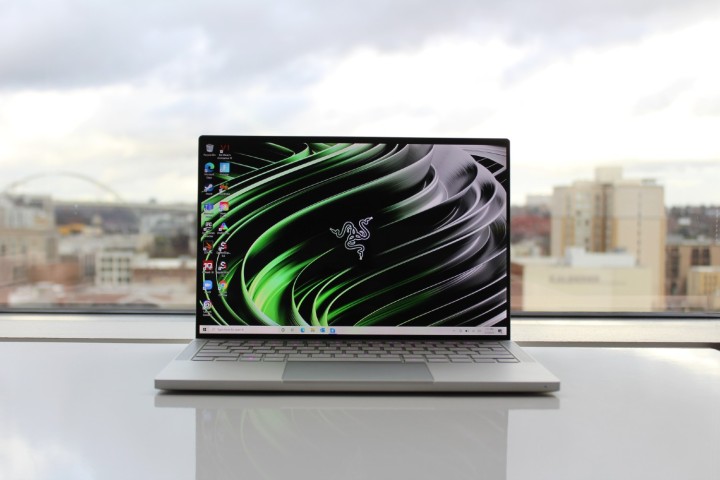
Razer Book 13 (2021)
A MacBook Air with Enhanced Portability
Reasons to consider buying this: It's the smallest and lightest MacBook alternative with an outstanding keyboard.Who should consider it: Professionals who desire the Razer touch.
Why we made the choice of the Razer Book 13:
Razer has been producing top-notch gaming laptops for years, but while their Stealth notebooks were of great quality, they weren't primarily intended as productivity-focused alternatives to MacBooks. That has changed with the introduction of the Razer Book 13, a laptop designed to compete with premium notebooks like the MacBook.
Unlike most of their products, the Razer Book prioritizes thinness and portability over having a discrete graphics card. The Razer Book is available with either an 11th-gen Intel Core i5 or i7, and it boasts up to 14 hours of battery life. This gives it comparable performance and battery power to the latest MacBooks, but the Razer Book surpasses Apple's product when it comes to ports. It comes with two Thunderbolt 4 ports, a USB-A port, an HDMI slot, as well as a headphone jack and a microSD card reader.
If you're a fan of Razer but crave a device more tailored towards productivity, the Razer Book 13 is a compelling choice.
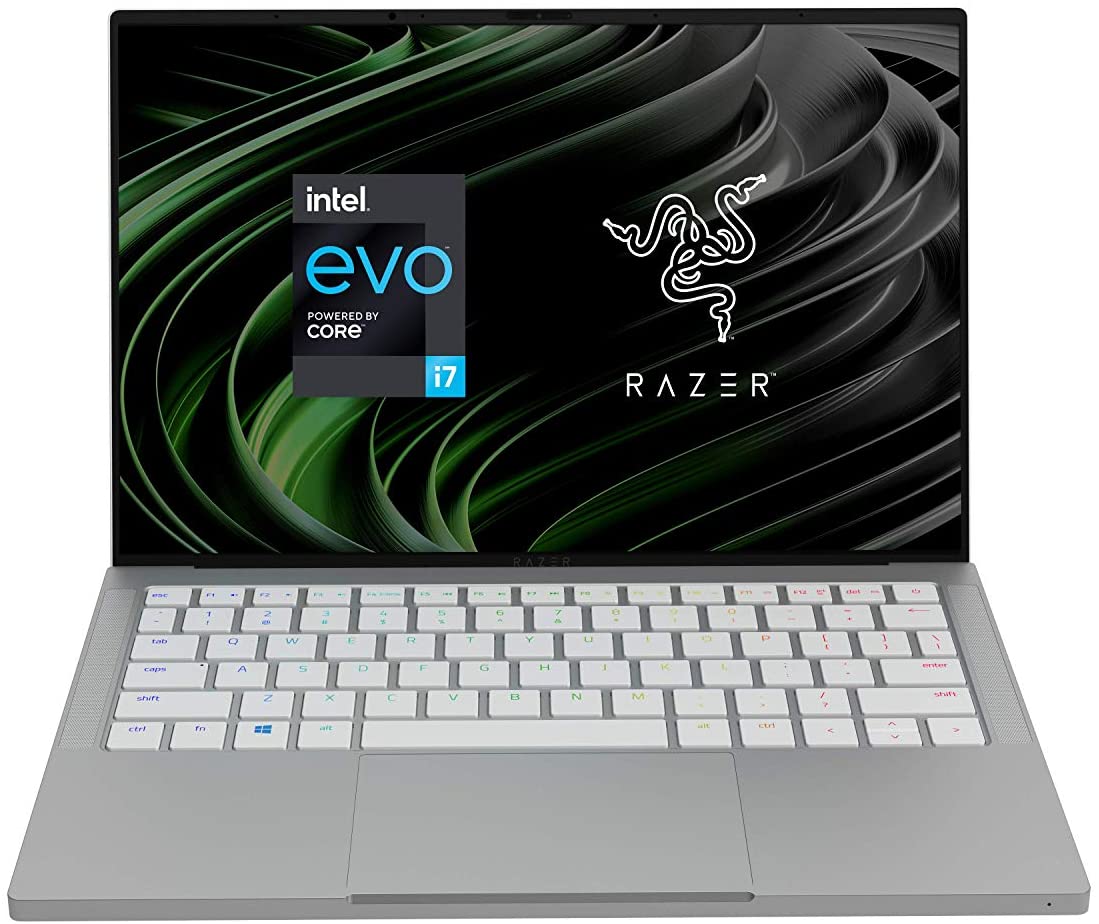
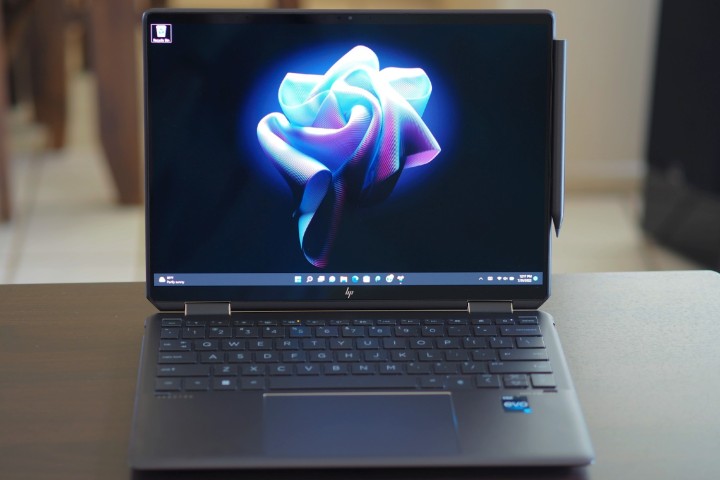
HP Spectre x360 13.5
A More Versatile Alternative to the MacBook
Review of the HP Spectre x360 13.5 Pros- Exquisite aesthetic
- Remarkable productivity performance
- Exceptionally sturdy build
- Superior keyboard and touchpad
- Breathtaking OLED display
- Surprisingly impressive battery life
- Lackluster performance in creative fields
- Moderately expensive
Who should consider it: Those looking for the combination of a tablet and laptop in one device.
Why we made the choice of the HP Spectre x360 13.5:
HP's premium convertible 2-in-1s have consistently remained at the forefront of various best-of lists, and the latest model has rightfully reclaimed its position. The Spectre x360 13.5 sports a toned-down gem-cut design, featuring more rounded edges and exhibiting a more elegant appearance, all while still maintaining the solid build quality, exceptional keyboard, and versatile 2-in-1 characteristics of its predecessor.
The 13.5-inch 3000 x 2000 OLED display is undoubtedly top-notch, delivering dynamic and accurate colors, as well as incredibly deep blacks, in a productivity-oriented 3:2 aspect ratio that closely resembles a sheet of paper in portrait tablet mode. Featuring Intel's 12th-gen U-series CPUs, the Spectre x360 13.5 offers commendable productivity performance and surprisingly good battery life when considering the presence of an OLED display.
When compared to its closest MacBook competitor, the MacBook Air M2, the Spectre x360 13.5 boasts a superior display and a more flexible design. Furthermore, it is built with the same level of precision as Apple's product.
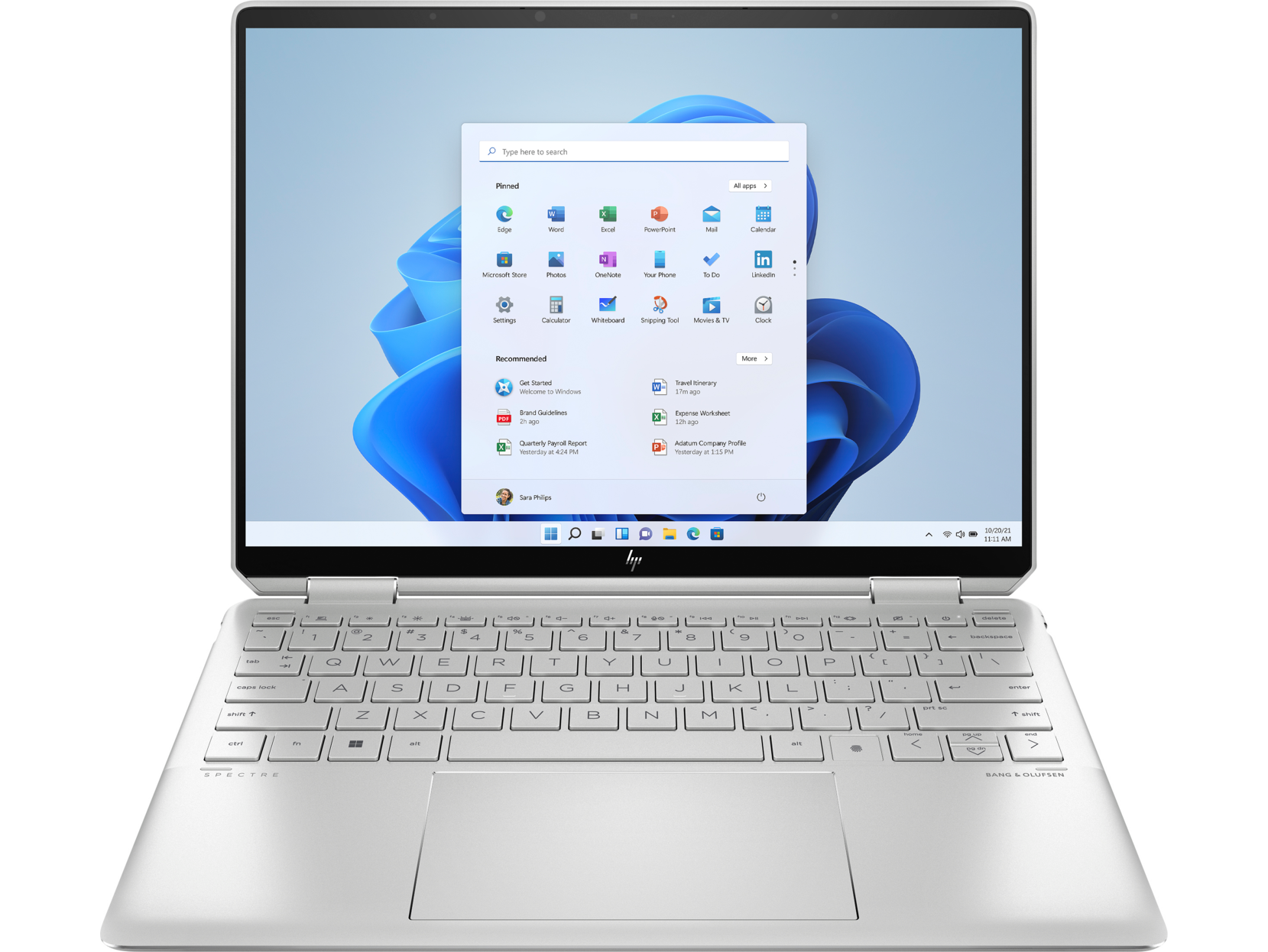
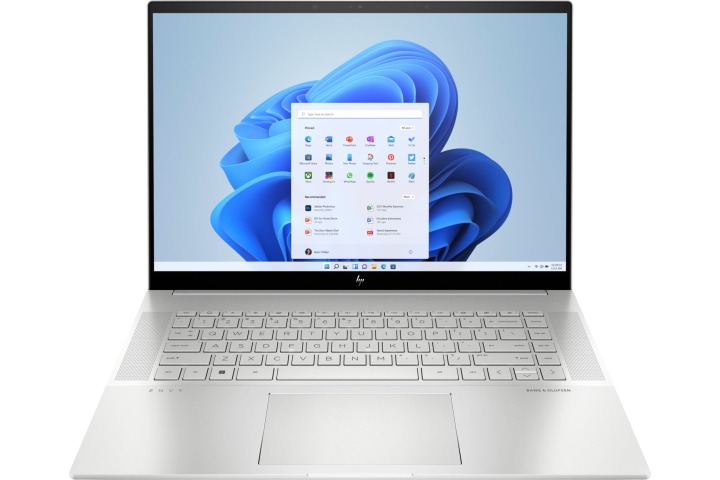
HP Envy 16
The Top MacBook Pro Alternative in the Midrange
Summary:
HP's Envy 16 with an OLED screen is ready to disrupt well-known, 15.6-inch power-user laptops.
Advantages
- Stunning 4K OLED touch screen
- Impressive 5-megapixel webcam
- Excellent performance and battery life
- Robust GeForce RTX 3060 GPU
Drawbacks
- Slightly heavy
- Insufficient 60Hz display for hardcore gamers
GET IT NOW
$1,389.99 HP
(Opens in a new window)
LG Gram 16
All the Size of the MacBook Pro 16 Minus the Weight
Reasons to Consider: It has the size of a MacBook Pro 16 without the weight.
Intended Users: Those in need of a powerful laptop for lightweight traveling.
Why we recommend the LG Gram 16:
For individuals accustomed to larger laptops, finding an alternative to the MacBook Pro 16 is a priority. In such cases, we suggest the LG Gram 16, a large and potent laptop with an incredibly slim profile.
In fact, the LG Gram 16 is the lightest 16-inch notebook in the world, weighing a mere 2.62 pounds. Despite its thinness, it offers impressive battery life and delivers robust performance with its Intel 11th-gen Core i7. While lacking a discrete graphics option, which is unusual in this category and price range, it still provides excellent work capabilities.
With the MacBook Pro 16 being significantly heavier and more costly, the LG Gram 16 becomes even more appealing due to its lightweight design and modern components.
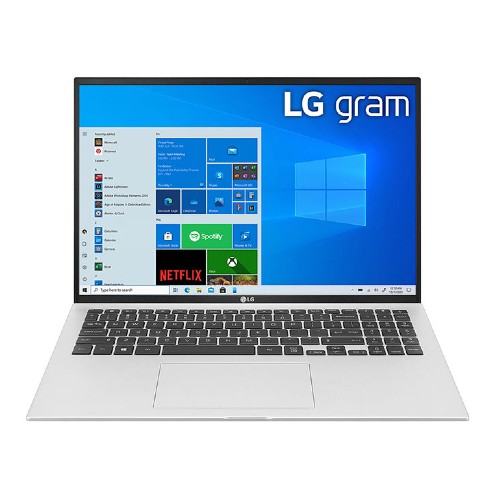

Lenovo Slim 7 Pro X
The Best Alternative to the 14-Inch MacBook Pro
Summary:
The Lenovo Slim 7 Pro X offers a unique combination of compact design, lightning-fast components, high-end features, and a very reasonable price.
Advantages
- Excellent value for the included components and features
- Portable design with a 14-inch 120Hz display
- Unparalleled performance thanks to the Ryzen 9 CPU
- Includes capable RTX 3050 graphics, which is rare for this size
- Comes with a 1TB SSD, 32GB of RAM, and a 1080p webcam
Drawbacks
- Doesn't offer the OLED screen option found in some competing models
- Lacks Thunderbolt support
- Features Wi-Fi 6 instead of 6E
Dell XPS 17 (9720)
The Ultimate Macrobook Pro 16 Alternative
Summary:
The enhanced 2022 Dell XPS 17 incorporates Intel's latest 12th Generation "Alder Lake" CPUs to enhance its already impressive design. It remains one of the top choices among 17-inch laptops.
Advantages
- Retains the slim and elegant design of its earlier version
- Offers a stunning 4K touch display option
- Provides strong overall performance with the new 12th Gen Intel CPU
- Includes graphics options up to GeForce RTX 3060
- Equipped with four Thunderbolt 4 ports
Drawbacks
- Expensive when configured with high-end components
- Lacks an OLED screen option
- Disappointing 720p webcam given the price
- Only features USB-C ports
GET IT NOW
$1,849.00 Dell
(Opens in a new window)
Lenovo ThinkPad X1 Carbon Gen 10 (2022)
The Ideal MacBook Pro Alternative for Business Users
Summary:
The Lenovo ThinkPad X1 Carbon offers unparalleled performance, a sharper webcam, and a variety of display options, solidifying its position as the best laptop for business purposes and potentially the best laptop overall.
Advantages
- Sleek, durable, and lightweight
- Includes USB-A and HDMI ports, in addition to Thunderbolt 4 ports
- Features an unbeatable keyboard
- Offers top-quality screen options, including OLED and 4K
- Delivers solid productivity performance and battery life
Drawbacks
- Comes at a business-class price
- No SD or microSD card slot
- 5G option is not yet available
Asus Vivobook Pro 16X OLED
An Excellent Alternative to the MacBook Pro for Media Editors
Summary:
Asus' Vivobook Pro 16X OLED is an appealing package, thanks to its 4K OLED display, speedy Ryzen 9 CPU, long-lasting battery, and innovative touch dial tool.
Advantages
- Visually stunning 4K OLED display with wide color coverage
- Ample performance from the AMD Ryzen 9 for content creation tasks
- Includes an LED touchpad dial tool for creative applications
- Offers long battery life for extended usage
Drawbacks
- GeForce RTX 3050 Ti GPU falls slightly short for the most demanding professional workloads
- USB-C port lacks Thunderbolt support
GET IT NOW
$1,239.00 Amazon
(Opens in a new window)
Introducing the Microsoft Surface Laptop Studio
An Excellent Alternative to the MacBook Pro for Pen-Based Digital Artists
Summary:
Filled with groundbreaking features, the Microsoft Surface Laptop Studio heralds a new generation of laptops designed for creative professionals who prefer pen input. The only major drawback is its performance, which falls short of class-leading.
PROS
Cutting-edge pull-forward touchscreen
Exceptional keyboard
Revolutionary haptic touchpad
Strong digital stylus support, complete with a magnetic holder
120Hz screen refresh rate
Impressive battery life
CONS
Disappointing performance, even with the upgraded Core i7 and RTX 3050 Ti
Only two USB ports
High price tag
Discover the HP ZBook Studio G9
The Ideal Substitute for the MacBook Pro for Demanding Creative Workloads
Summary:
HP's 16-inch ZBook Studio G9 may lack power and features compared to its counterparts, but it remains an exceptional mobile workstation.
PROS
Powerful processing and graphics capabilities
Stunning 4K DreamColor or OLED display
Option to choose between Nvidia's professional or gaming GPUs
CONS
No HDMI or Ethernet ports
Only a 720p webcam
Considerably high price
GET IT NOW
$4,076.00 HP
(Opens in a new window)
Experience the Dell Precision 5560
The Perfect Workstation-Grade Alternative to the MacBook Pro
Summary:
As the workstation version of the acclaimed Dell XPS 15, the Precision 5560 is a slim and beautifully designed laptop with an impressive display, capable of handling most professional applications.
PROS
Remarkably thin and lightweight for a mobile workstation
Gorgeous high-resolution 16:10 touchscreen
Durable aluminum and magnesium build
Features Thunderbolt 4 ports and an SD card slot
Excellent multithreaded performance for a slim workstation
CONS
Expensive
Limited ports (includes a USB-A and HDMI dongle)
No option for an OLED screen
GET IT NOW
$2,819.00 Dell
(Opens in a new window)
Enter the Razer Blade 15 Advanced Model (2022)
An Ideal Alternative to the MacBook Pro for Creative Pros Who Are also Gamers
Summary:
The Razer Blade 15 Advanced Model remains one of the most expensive gaming laptops on the market, but its latest CPU and GPU technology take its performance to new heights while maintaining its premium and portable design.
PROS
Best-in-class design with a few minor enhancements from 2021
Intel "Alder Lake" CPU and Nvidia RTX 3070 Ti deliver impressive performance across all types of games
Beautiful 240Hz QHD display
Wide range of ports, 1080p webcam, and a top-of-the-line touchpad
CONS
High starting price, which increases even more with additional features
Average battery life compromises portability
GET IT NOW
$1,960.19 Amazon
(Opens in a new window)
Buying Guide: The Top MacBook Pro Alternatives for 2023
At its core, the MacBook Pro boasts a premium design and exceptional build quality. It is slightly thicker than ultraportable laptops but more portable than most mobile workstations. Currently, Apple offers the MacBook Pro in 13-inch, 14-inch, and 16-inch screen sizes. However, Windows laptops have no trouble matching these options, offering a wide variety of sizes and even surpassing the Mac with 17-inch displays.
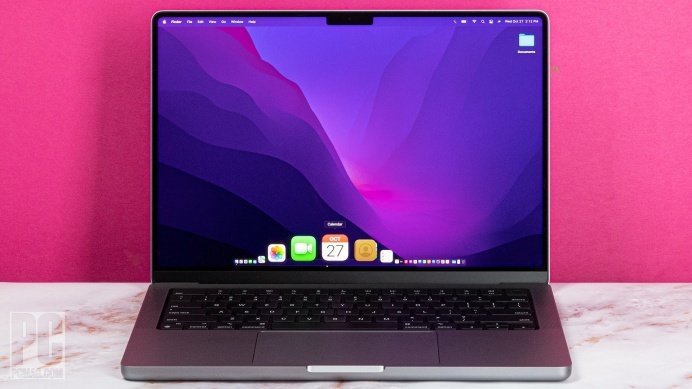
(Credit: Molly Flores)
Smaller sizes prioritize portability but have a lower performance capacity, while the 16-inch MacBook Pro emphasizes power and performance. Read each linked MacBook Pro review for more in-depth information about their respective trade-offs.
Windows laptops provide two options that MacBooks lack: touchscreens and 2-in-1 convertible designs. Apple has not embraced touchscreen technology for any of its laptops, and it has even removed the pseudo-solution Touch Bar found in previous models. In contrast, many Windows laptops offer both touch and non-touch displays, with many convertible models that allow you to fold back the screen for tablet mode or prop up the system like an easel for presentations.
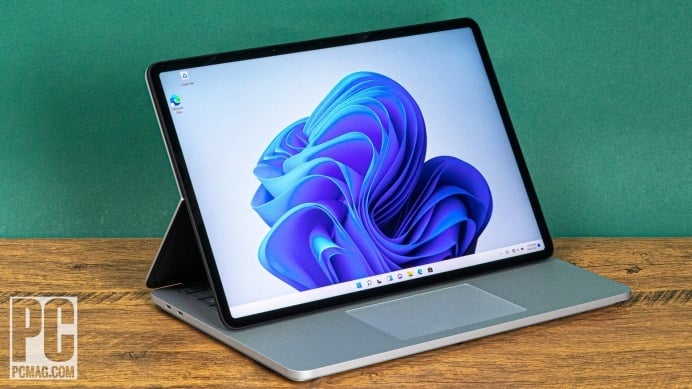
(Credit: Molly Flores)
Numerous 13- and 14-inch convertibles are available in product lines like HP's Envy and Spectre, Lenovo's Yoga, and Dell's XPS and Inspiron. However, hybrid designs are less common among larger, more powerful laptops. Not every user will require a touchscreen, but it can be a convenient feature. For creative professionals, stylus support for digital manipulation or drawing can be a significant advantage.
But let's return to the screen itself. Choosing the right size depends on personal preference, how frequently you plan to travel with your laptop, and your performance requirements. The 16-inch MacBook Pro can deliver power that smaller machines cannot. If you only need moderate power in your system and would consider a 13-inch MacBook Pro, a similarly sized Windows system would be suitable, and so on.
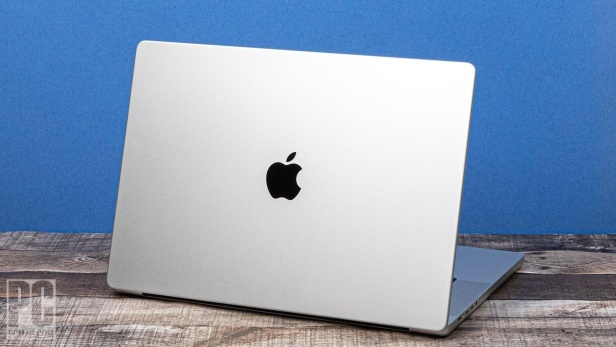
(Credit: Molly Flores)
Apple laptop screens are renowned for their stunning, high-resolution Retina Displays, which showcase the details and colors of photos and visual content to their fullest potential. When looking for an alternative, it's important to find a Windows laptop that surpasses full HD (1,920-by-1,080-pixel) resolution.
Our reviews provide details on native screen resolutions, as well as color coverage and brightness measurements. UHD or 4K resolution (3,840 by 2,160 pixels) is increasingly popular among professional systems, as is OLED screen technology, which offers more vibrant colors and higher contrast, as well as unbeatably deep blacks compared to common IPS panels. More and more systems feature displays with a 16:10 aspect ratio rather than the standard 16:9, stretching 4K to a resolution of 3,840 by 2,400.
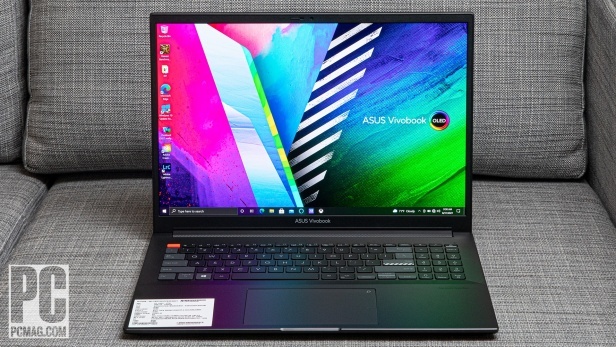
(Credit: Molly Flores)
The most expensive content creator laptops and mobile workstations boast 4K screens as large as 17 inches. If you wish to digitally draw, look for systems that combine these high resolutions or OLED technology with a touch display and a pen, offering the best of both worlds—something that MacBooks cannot provide.
The Processor Landscape: What Competes With Apple's Chips?
While individuals who simply appreciate macOS and the Apple aesthetic may find the MacBook Air to be sufficient, the MacBook Pro is the preferred option for creative professionals who require superior computing power and a feature set tailored to their creative work. Photo and video editors, animators and VR creators, music producers, and many others will benefit from the top-notch speed. The best laptops for video editing that we recommend are particularly relevant in this context, as they offer high-performance capabilities and advanced features, just like the MacBook Pro. Our general guide on buying a laptop processor also delves into these aspects.M1 and M2, Explained
Apple's groundbreaking switch from Intel processors to its own M1 chips in 2020 paved the way for the impressive performance of their current MacBook lineup. Building on this success, Apple introduced the M2 chip in its latest iterations of the MacBook Pro (specifically, the 13-inch model) and MacBook Air in the summer of 2022.Apple's SOC platform effectively handles both the processing and graphical requirements of their laptops and performs remarkably well, as we have observed in our tests. The M1 architecture marked the initial phase of Apple's transition, and now both M1 and M2 processors are available in various power tiers.
We won't overwhelm you with excessive technical details here, as we understand that you're not specifically in the market for a MacBook. However, we have plenty of coverage if you'd like to learn more about the architecture, the benchmark results, and whether the M1 chip is suitable for your needs. If you're interested in the M2, take a look at our review of the M2-based MacBook Pro and our detailed comparison between M1 and M2.
The recently launched M2 Pro and Max variants (similar to the M1 Pro and M1 Max) are now available since early 2023. You can find our review of the 16-Inch MacBook Pro featuring the M2 chip. Additionally, while the M2-based MacBooks represent the latest models, the various M1 chip versions still retain their relevance for now—for instance, the M1 MacBook Air is arguably an excellent option, and the M1 Pro and M1 Max can still be considered as great value purchases now that the M2 equivalents have arrived. These options serve as the benchmark for evaluating Windows alternatives.
Apple's transition to its own silicon was a significant move, but it has proven to be successful, providing Apple with greater flexibility to optimize their hardware and software for seamless integration. To keep up with this trend, if you're considering a Windows laptop, make sure to find an AMD or Intel solution that offers comparable performance. As mentioned earlier, laptops with smaller screen sizes, such as 13 and 14 inches, have lower power limitations, while larger systems ranging from 15 to 17 inches typically offer the highest performance capabilities.

(Credit: Molly Flores)
AMD and Intel CPU Alternatives
In the world of Windows laptops, Intel's Core processors have long dominated the market, but AMD has made a remarkable comeback in recent years with their Ryzen chips. The Ryzen processors, in particular, excel at handling media editing workloads.For creative professionals seeking 13- and 14-inch laptops, Intel's Core i7 and AMD's Ryzen 7 processors are the primary options, respectively. Some base models may come equipped with Core i5 or Ryzen 5 chips, which are adequate for everyday productivity tasks but generally fall short in terms of power for professional-grade work.
When it comes to laptops with 15-inch screens or larger, you'll find either Core i7 and Ryzen 7 chips or higher-end options like Core i9 and Ryzen 9. These higher-tier processors provide true workstation-grade performance and can compete with the best that the MacBook Pro's M1 Max has to offer. (If you're interested, we have already conducted a comprehensive head-to-head benchmark comparison pitting the Core i9-12900HK against the M1 Max.)
In summary, if you're searching for an all-around mobile workstation as an alternative to the 16-inch MacBook Pro, opt for a Ryzen 9 or Core i9 processor. If you can work with a more moderate option, Core i7 and Ryzen 7 will provide sufficient performance and serve as the best alternatives to the 13-inch MacBook Pro.
Please note that many of the laptops mentioned here were reviewed with Intel 11th Generation and AMD Ryzen 5000 series processors, but newer chips have been released since then. If you're purchasing a new laptop in 2023, look for Intel's 12th Gen "Alder Lake" Core CPUs (which start with the number 12 in their model numbers) and AMD Ryzen 6000 series CPUs (which have model numbers in the six thousands) dominating the market. By the middle of the year, expect the rise of Intel's 13th Gen "Raptor Lake" and AMD Ryzen 7000 mobile chips.
For those who are technically inclined, the initial M1 chip from Apple's entry-level MacBook (which has been succeeded by the M2 chip in the latest versions of the 13-inch MacBook Pro) features eight CPU cores and can handle eight software threads simultaneously. With the 14-inch MacBook Pro, you'll find the M1 Pro, which comes in two variations with 22 or 26 total cores. The M2-based versions of the 16-inch MacBook Pro have also recently been introduced. The base M2 chip also offers eight CPU cores and the ability to handle eight software threads, but it offers more memory and bandwidth. Both the M1 and M2 chips include GPU cores, with the M2 chip featuring more cores than the base M1 chip, as they serve as SoCs responsible for handling graphics acceleration. For a more detailed understanding of GPUs, please read on.
The Ryzen 6000 series CPUs feature either six or eight cores capable of processing 12 or 16 threads simultaneously. Intel's 12th Gen chips, on the other hand, tend to have more cores: Core i5 processors start with eight cores and 12 threads, while the top-tier Core i7 and i9 models can have up to 14 cores and 18 threads. It's worth mentioning that with the 12th Gen architecture, some CPU cores are designated as "P" (for Performance) cores, while others are designated as "E" (for Efficient) cores, each serving different computing purposes.
Modern processors offer more than just a raw core count. The intricate microarchitectures and synergistic developments undertaken by chip manufacturers have made comparisons based solely on paper specifications less impactful. For a comprehensive analysis of how different processors compare, we encourage you to refer to the performance-testing sections in our individual laptop reviews. Additionally, check out our in-depth guide on choosing among the current laptop processors.
Dedicated Graphics: Evaluating the Laptop's GPU
For many creative tasks listed here, such as video editing, encoding, streaming, modeling, and animation, having a powerful GPU is crucial. While discrete laptop GPUs may not match the performance of comparable desktop graphics cards for gaming, modern mobile GPUs still offer substantial power.It's important to note that not every creative professional necessitates a laptop with a discrete GPU. If your work is more focused on processing or data-intensive tasks rather than visual rendering, you can allocate less of your budget towards a high-end GPU and instead prioritize the processor and memory. In such cases, a notebook with integrated graphics may suffice or an entry-level GPU could be a more cost-effective option.
While Apple's transition to the "M" architecture means that MacBooks no longer use dedicated GPUs from Nvidia or AMD alongside their processors, Windows laptops equipped with discrete GPUs generally rely on graphics processors from one of these two industry giants. Despite efforts by AMD and Intel, Nvidia remains the dominant player with its GeForce (consumer and gaming) and RTX A series (workstation, formerly known as Quadro) GPU lines. AMD GPUs are less commonly found in laptops.
Both Nvidia's GeForce and A series GPUs utilize the RTX branding to denote their advanced GPUs capable of ray tracing. The Quadro and A series GPUs excel in CGI rendering and CAD applications, making them ideal for animators, VFX professionals, engineers, and other visual production and modeling tasks. However, you'll likely find more laptops that utilize GeForce GPUs among our recommended options, as they are popular choices for content creation as well as gaming.
While the entry-level GeForce RTX 3050 and 3060 GPUs offer great value for moderate workloads, the higher-end RTX 3070, RTX 3070 Ti, RTX 3080, and RTX 3080 Ti deliver exceptional performance, surpassing Apple's chip offerings.
A minor note is that Intel's Iris Xe integrated graphics are relatively comparable to the more modest graphics capabilities of the 13-inch MacBook Pro. While there are a few laptops in our recommendations that rely on integrated graphics, these tend to be smaller laptops designed for less visually demanding workloads.
Memory, Storage, and Connectivity
Completing the internal specifications of a laptop are the memory, storage, and connectivity options. Fortunately, these areas do not require much translation from the Mac ecosystem, as the principles remain the same across different systems. In general, more memory and storage are desirable. Larger storage capacity allows for storing extensive media files and projects, while more RAM enables faster system performance.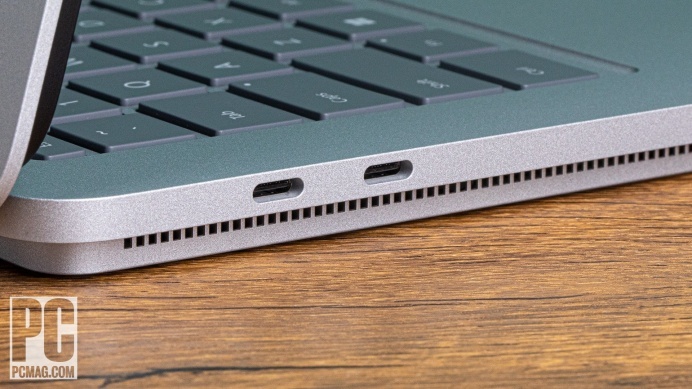
(Credit: Molly Flores)
In today's professional laptops, the minimum recommended memory is 16GB. Even many consumer-oriented notebooks, designed for general use, now come equipped with 16GB of RAM instead of the traditional 8GB. Workloads that involve intensive tasks such as video editing can greatly benefit from 32GB or more RAM. Many professional creators consider 32GB to be the baseline, while power users may opt for 64GB or even 128GB. In terms of storage, it's advisable to look for laptops with at least a 1TB solid-state drive (SSD), and consider 2TB or more if you frequently work with 4K videos or other data-intensive files.
Next, let's talk about ports. While most average users can get by with a couple of USB connections, the requirements are different for creative professionals. USB-C has become the standard for slim laptops, and it's especially vital for individuals who frequently transfer large files—USB-C and Thunderbolt offer faster data transfer speeds, making a noticeable difference in workflow efficiency. Most laptops designed for content creators, including the MacBook Pro, are equipped with Thunderbolt 3 or 4 ports featuring USB-C connectors. Larger models may also provide USB Type-A ports.
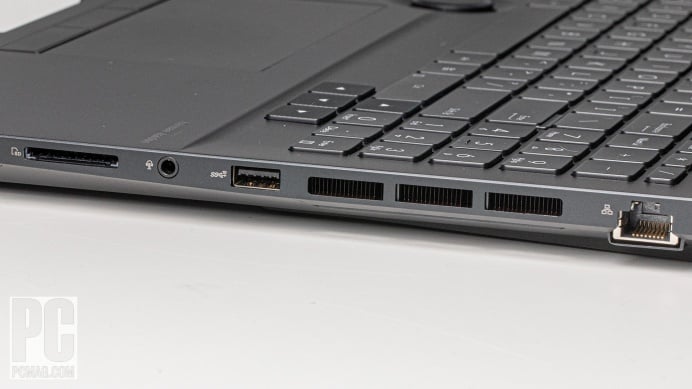
(Credit: Molly Flores)
For content creators, however, USB ports are not the only considerations. While it is possible to purchase USB-based monitors or use an adapter to connect a DisplayPort monitor to a Thunderbolt port, many professionals prefer laptops that offer dedicated video-out ports with HDMI or DisplayPort connectors. SD card slots are also highly valued by certain users, particularly photographers who frequently transfer images between cameras and laptops.
What Can You Expect to Spend?
As a broad guideline, top-tier laptops come with hefty price tags. Smaller, less robust devices offer lower entry points, but you will likely need to enhance certain components or functionalities to meet your requirements.
Apple's 13-inch MacBook Pro starts at $1,299. Although not particularly steep, you can readily find Windows laptops at or below this threshold. However, the larger MacBook Pros belong to a higher power category and come with corresponding price tags. The 14-inch model starts at $1,999, while the 16-inch MacBook Pro begins at $2,499.
Given the multitude of choices available from various manufacturers, Windows laptops can be found across a wide range of price points. As previously mentioned, some laptops offer greater configurability or customization options at the time of purchase compared to Apple's machines. This allows you to adjust the price according to your specific needs and budget.
Apple computers often have a reputation for carrying a premium price, but the reality is that high-end Windows laptops are not inexpensive either. The value proposition becomes less significant with these laptops compared to their performance, capacity, and display quality. It is quite effortless to surpass the $4,000 mark when configuring a fully-loaded MacBook Pro or Windows mobile workstation.
In conclusion, if you're in the market for a MacBook Air alternative in 2021, you have plenty of excellent options to choose from. Whether you prioritize portability, power, or high-performance graphics, there is a laptop out there that can meet your needs. From the sleek and powerful Dell XPS 13 Plus to the versatile and stylish Microsoft Surface Laptop Studio, these alternatives offer a wide range of features and specifications that rival Apple's offerings. So, before you take the plunge and invest in a new MacBook Air, make sure to explore these top contenders and find the perfect laptop that suits your personal preferences and budget.



